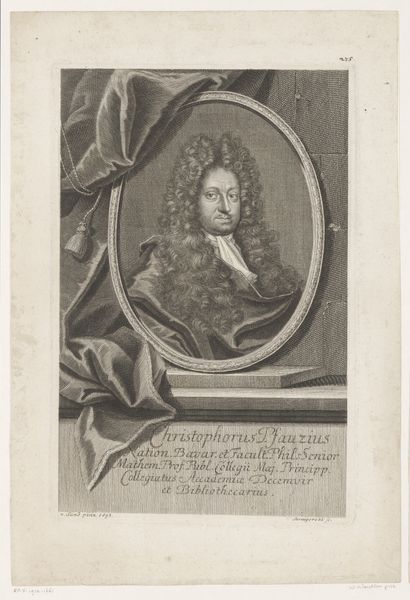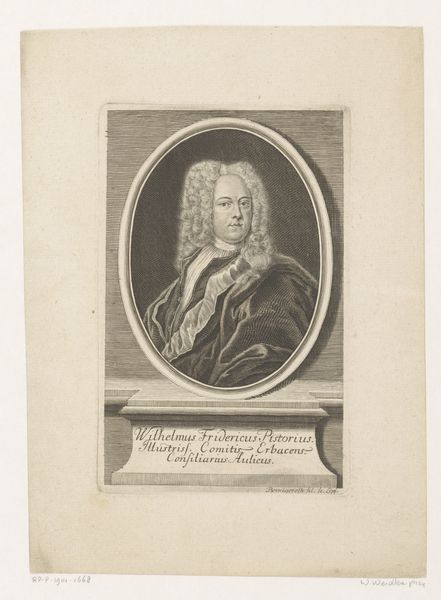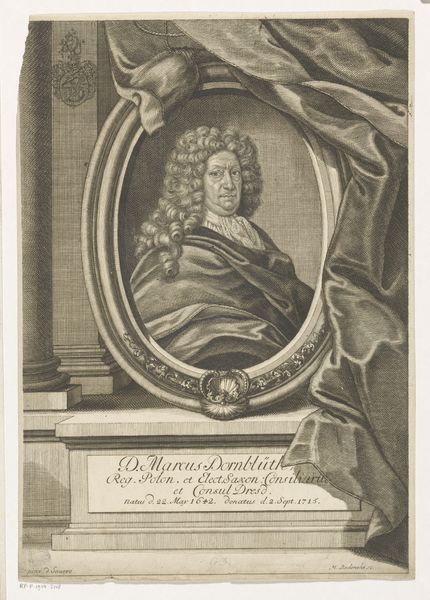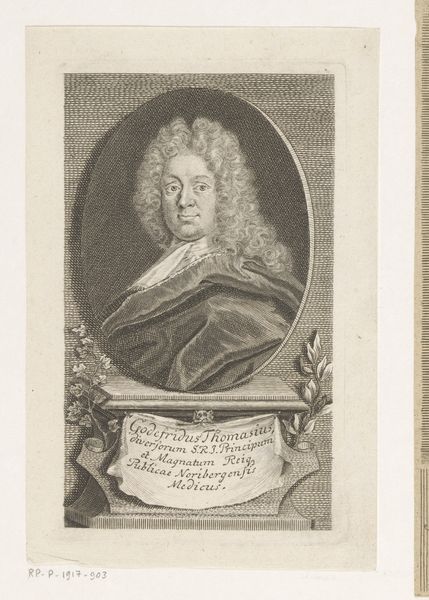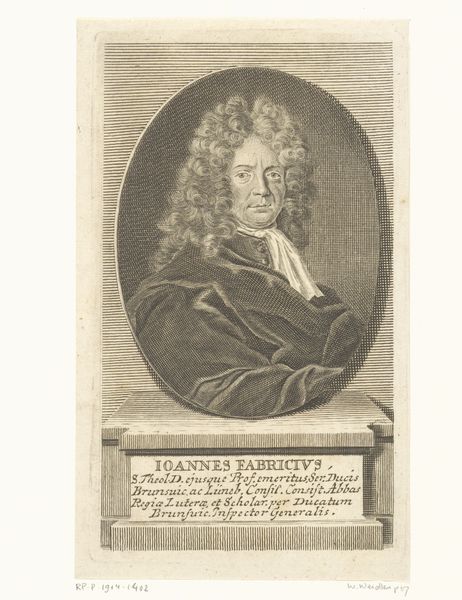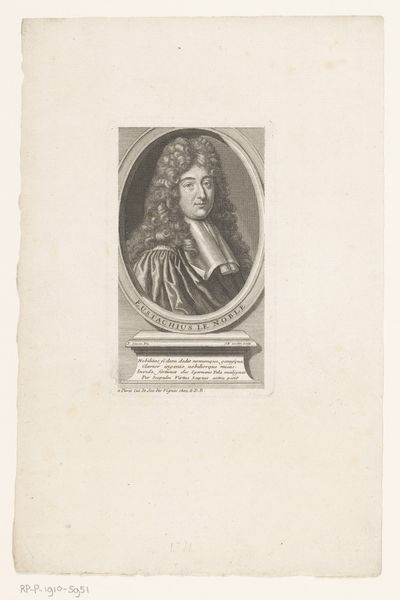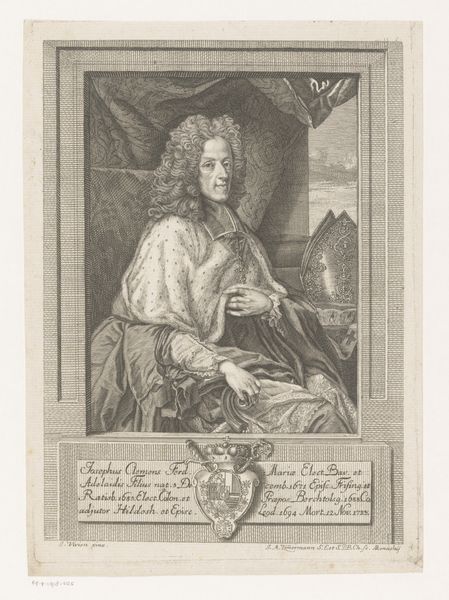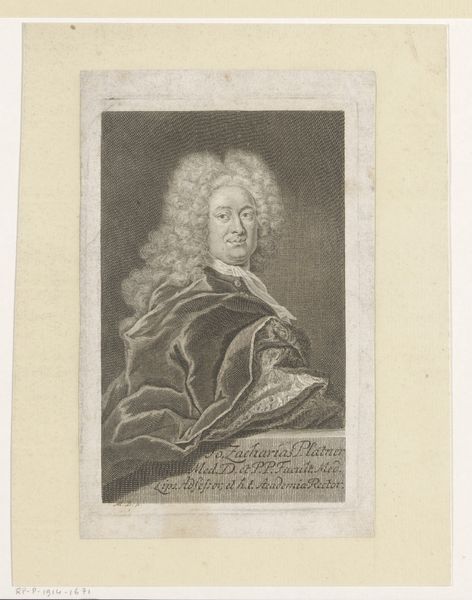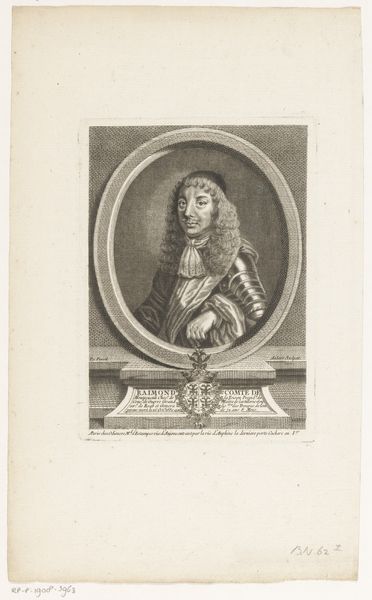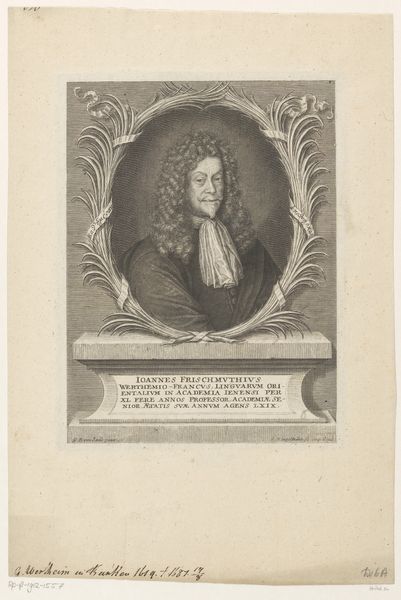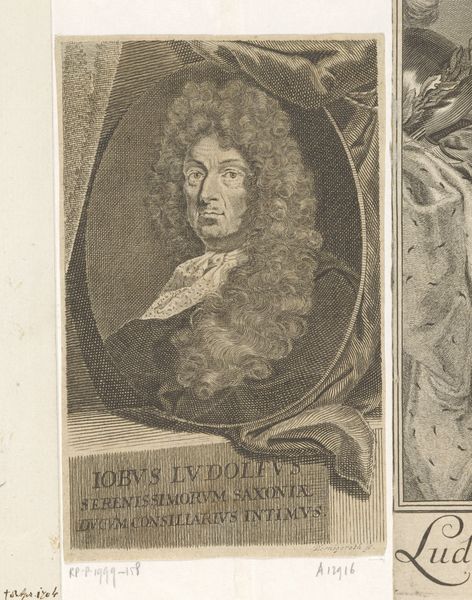
print, engraving
#
portrait
#
baroque
# print
#
engraving
Dimensions: height 190 mm, width 136 mm
Copyright: Rijks Museum: Open Domain
Curator: Before us, we have "Portret van Jean-Baptiste Verduc," a baroque print dating sometime between 1694 and 1733, currently held in the Rijksmuseum collection. The piece is an engraving. Editor: He has a wonderfully whimsical gaze! And the hair… I can practically feel the volume! Is that drapery or a dark thundercloud surrounding him? Dramatic. Curator: Considering the conventions of portraiture in that era, particularly for a notable physician such as Verduc, these baroque trappings convey status. Look at the paper itself; it is chain-lined, which speaks to its production in a specific mill of the time, and suggests a certain cost. Editor: You can really see the artisan's labor—the detail in the hair must have taken ages to engrave! It reminds me of elaborate cakes from that era… frivolous and yet captivating. It makes you think, how much labor goes unseen for appearances' sake? Curator: The engraving process itself would require considerable skill; each line carefully etched onto the plate. What I find interesting is how printmaking allowed for wider distribution. Multiple impressions made Verduc accessible, transforming individual representation into a commodity. Editor: A commodity… even portraits become consumer objects! Does it somehow flatten him to an accessible brand? He does seem rather... stoic. Perhaps if I stare longer I might feel like a potential customer... it needs more twinkle for the everyday consumer, don't you think? Curator: I think, with artworks, we can engage on two levels, as records of production processes or the way an artist's intention collides with its function. In our time, we think a portrait captures someone’s very soul. This shows us how the economics behind portraiture are always present. Editor: Absolutely! It all circles back, doesn't it? To labor, cost, and the question of who truly benefits when the swirls and the curls are immortalized on the plate. Curator: Precisely, food for thought—the labor, economics and distribution all at work right before our eyes. Editor: Indeed. A deep dive into this artwork makes us question the entire infrastructure that brought the subject into frame and form. Intriguing.
Comments
No comments
Be the first to comment and join the conversation on the ultimate creative platform.
